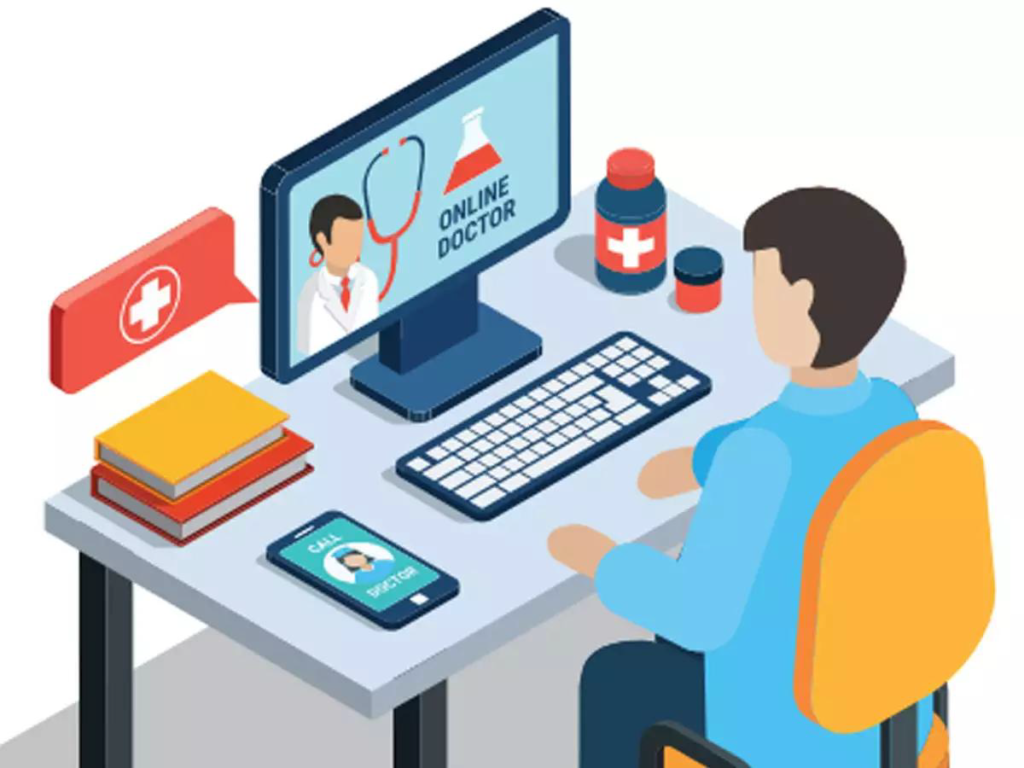The Rise of Telemedicine
Telemedicine, also known as telehealth, has witnessed unprecedented growth in recent years,
propelled by advancements in technology and the growing demand for accessible healthcare
services. Gone are the days when patients had to wait for hours in crowded waiting rooms or
travel long distances to see a doctor. With telemedicine, healthcare is just a click away.
Whether it’s a routine check-up, a consultation with a specialist, or even mental health
counseling, patients can now access a wide range of medical services from the comfort of their
homes.
The Benefits of Telemedicine
The benefits of telemedicine are manifold, offering a win-win solution for both patients and
healthcare providers. For patients, telemedicine means greater convenience and flexibility. No
longer bound by geographical constraints or limited appointment slots, patients can schedule
virtual visits at their convenience, saving time and avoiding unnecessary stress. Telemedicine
also enhances access to care for individuals living in rural or underserved areas, where
healthcare facilities may be scarce. Moreover, telemedicine has proven to be a valuable tool in
managing chronic conditions, allowing for regular monitoring and timely intervention.
For healthcare providers, telemedicine streamlines workflows and improves efficiency. By
eliminating the need for physical office visits, providers can optimize their schedules and see
more patients in less time. Telemedicine also reduces no-show rates and cancellations, as
patients are more likely to keep their appointments when they can do so from home.
Additionally, telemedicine facilitates collaboration among healthcare professionals, enabling
real-time consultations and referrals to specialists.
Beyond Telemedicine: Emerging Technologies
While telemedicine has undoubtedly revolutionized healthcare delivery, the future holds even
greater promise with the emergence of cutting-edge technologies. Artificial intelligence (AI) and
machine learning algorithms, for example, are transforming diagnostics and treatment planning.
By analyzing vast amounts of patient data, AI can assist healthcare providers in making more
accurate diagnoses, predicting disease progression, and personalizing treatment regimens.
Wearable devices equipped with sensors and monitors are another game-changer in the realm
of digital health. From fitness trackers to smartwatches, these devices allow individuals to track
their health metrics in real-time, empowering them to take proactive steps towards better
health outcomes.
Moreover, remote monitoring technologies enable continuous surveillance of patients with
chronic conditions, such as diabetes or hypertension, alerting healthcare providers to any
deviations from normal parameters. Robotics and virtual reality (VR) are also revolutionizing
healthcare delivery, particularly in the fields of surgery and medical training. Robotic-assisted
surgery offers greater precision and control, minimizing the risk of complications and reducing
recovery times. Meanwhile, VR simulations provide medical students and professionals with
immersive learning experiences, allowing them to practice complex procedures in a safe and
controlled environment.
Challenges and Considerations
Despite the numerous benefits of telemedicine and emerging technologies, several challenges
and considerations must be addressed to realize their full potential. Privacy and security
concerns, for instance, loom large in an era of increasing digitization. Patients must trust that
their sensitive medical information is being safeguarded against unauthorized access or data
breaches. Regulatory and licensure issues also pose significant barriers to the widespread
adoption of telemedicine. Each state has its own set of rules and regulations governing
telemedicine practice, creating a patchwork of requirements that can be confusing and
burdensome for healthcare providers.
Moreover, disparities in access to technology and digital literacy remain pervasive, particularly
among vulnerable populations. Individuals living in rural or low-income areas may lack access to
high-speed internet or smartphones, limiting their ability to participate in telemedicine
consultations. Language and cultural barriers can also hinder effective communication between
patients and healthcare providers, leading to misunderstandings or misdiagnoses.
Additionally, reimbursement policies and insurance coverage for telemedicine services vary
widely, creating financial uncertainties for both patients and providers.

Conclusion
In conclusion, the future of healthcare is undeniably digital, with telemedicine serving as a
cornerstone of this transformation. By harnessing the power of telemedicine and emerging
technologies, we can create a more accessible, efficient, and patient-centered healthcare
system for all. However, realizing this vision will require collaboration and cooperation among
policymakers, healthcare providers, technology companies, and patient advocacy groups.
Together, we can navigate the challenges and seize the opportunities that lie ahead, ensuring
that the future of healthcare is bright and promising for generations to come.
.




